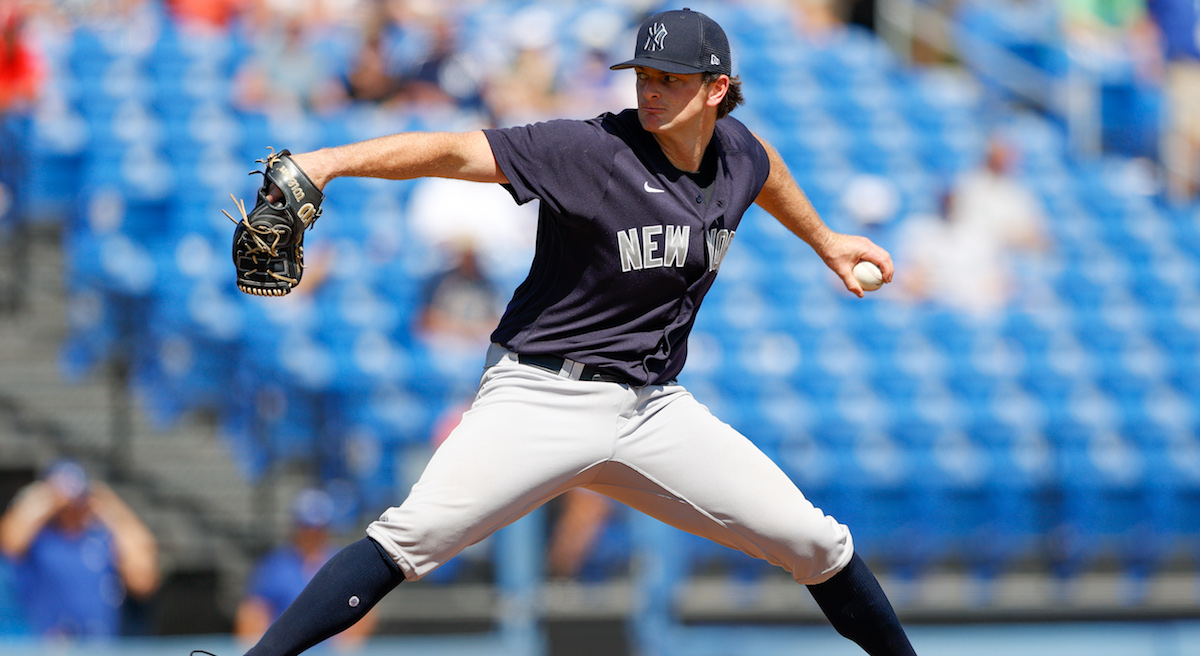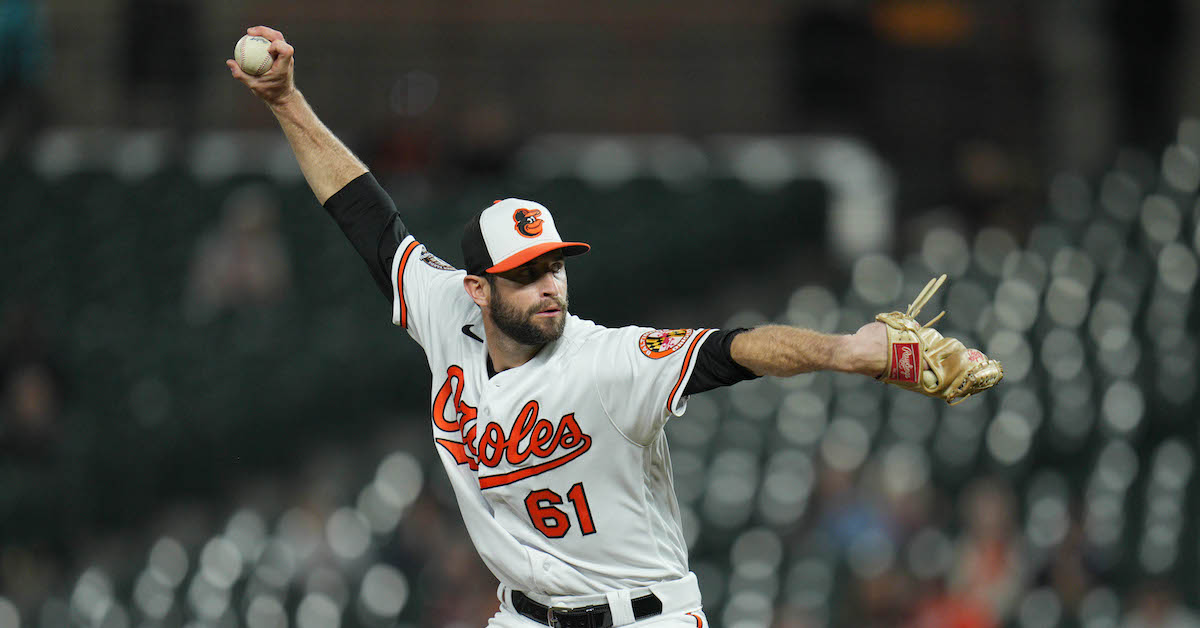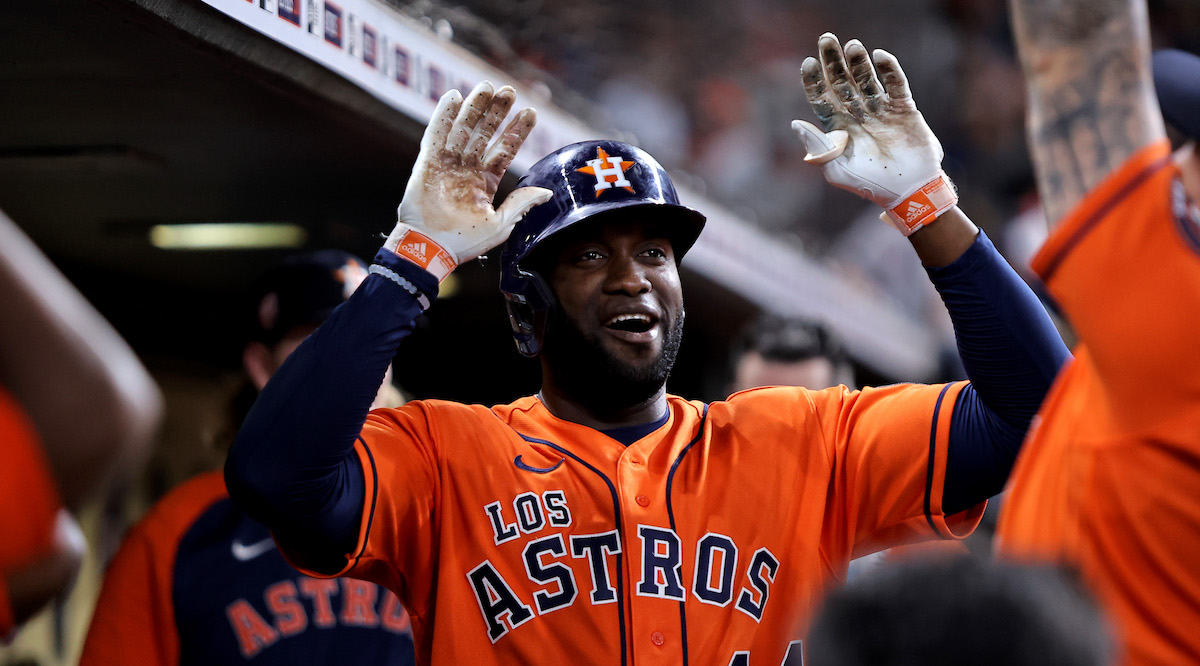Senior Developer, Baseball Systems
Location: Boston, MA
Department: Baseball Operations
Status: Full-Time
Position Overview:
The Senior Developer, Baseball Systems position will be a member of the baseball operations software development team, and is responsible for the design, development, and support, of all baseball systems. This individual will work closely with members of baseball operations to understand business requirements that drive the analysis, design, and development of quality baseball systems and solutions. This senior developer will collaborate closely with the Director of Baseball Systems, colleagues on the software development team, and baseball operations personnel from all departments.
Responsibilities
- Create leading-edge baseball solutions together with the software development team and others on new and existing baseball systems
- Lead the design and implementation of the software architecture and embrace a software engineering mindset
- Lead the software development process of critical baseball applications, including requirements gathering, analysis, effort estimation, technical investigation, software design and implementation, testing, bug fixing, and quality assurance
- Responsible for the design and development of databases, web services, graphical user interfaces, and other aspects of web and desktop applications
- Actively participate in the architecting, deployment, and maintenance of system solutions in a cloud-based environment
- Actively participate with colleagues in design reviews, code reviews, and exercise best practices
- Work closely with baseball analysts to design and implement solutions to their modeling and data needs
- Respond to and resolve technical problems and issues in a timely manner
- Identify and implement creative solutions for technical challenges
Technical Skills
- Bachelor’s degree in Computer Science, Software Engineering, Computer Engineering, or a related field
- 5 or more years of development experience using some combination of C#, Java, Python, Ruby, JavaScript, Typescript, T-SQL, ServiceStack, Angular, React, Vue, Knockout, or other frameworks, with a focus on responsive & progressive web applications.
- Strong database design and development experience, especially with MS SQL Server
- Experience integrating systems and data using third-party APIs and web services
- Experience with cloud technologies from AWS, GCP, or Azure are a plus
- Experience with R is a plus
- Experience with Dev Ops tools is a plus
General Skills:
- Ability to work autonomously and as a team in a fast paced environment
- High level of attention to detail with the ability to multi-task effectively
- Comfortable working remotely using Zoom, Teams, Slack, Trello, and other tools to communicate with all team members
- High degree of professionalism and ability to maintain confidential information
- Excellent organizational and time management skills
- An understanding of baseball, common terms, and analytic measures, are a plus
The Red Sox (or FSM) requires proof of being up-to-date on COVID-19 vaccination as a condition of employment, subject to applicable legal requirements. Up-to-date means having received all recommended COVID-19 vaccination doses in the primary series and a booster dose(s) when eligible, per CDC guidelines.
Prospective employees will receive consideration without discrimination based on race, religious creed, color, sex, age, national origin, handicap, disability, military/veteran status, ancestry, sexual orientation, gender identity/expression or protected genetic information.
To Apply:
To apply, please follow this link.
Data Architect, Baseball Systems
Location: Boston, MA
Department: Baseball Operations
Status: Full-Time
Position Overview:
The Data Architect, Baseball Systems position will be a member of the baseball operations software development team, and is responsible for the design, implementation, and deployment of the information architecture of all baseball systems. This position must be comfortable with on-premises and cloud solutions, and take the initiative to explore new optimizations and cutting-edge data technologies and is expected to research industry trends to stay current on new tools and technology, and will work closely with our data engineers, analysts, developers, and other members of baseball operations.
Responsibilities
- Through research, design, and architectural efforts, and in collaboration with software development resources, ensure we have access to world-class data for analytical and system purposes.
- Develop a thorough understanding of the all areas within Baseball Operations to help design effective and highly integrated solutions
- Ensure processes and systems are in place to support the integrity, accuracy, consistency, and availability of all content
- Create and manage ETL (extract, transform, load) data integration processes
- In collaboration with the analytics and software development teams, design and implement baseball algorithms and functionality
- Partner with data providers to understand current and future data roadmaps, identify limitations, and develop along-term data content plan in collaboration with baseball leadership
- Respond to and resolve data-related problems and issues in a timely manner.
- Complete ad-hoc database queries and analysis as directed
- Effectively communicate statuses to the Director, as well as other leadership as requested throughout all projects
Knowledge & Experience:
- Bachelor’s degree in computer science, computer engineering, data engineering, or equivalent professional experience; Master’s degree a plus
- 6+ years of related work experience, including demonstrated knowledge about data management best practices and ability to effectively solve problems pertaining to data infrastructure and integrity
- Proven track record of collecting and understanding complex requirements and delivering creative and effective solutions
- Expertise in relational databases, database design, architecture, and development
- Expertise designing and building data models for Snowflake and ingesting data into Snowflake using various pipelines
- Expertise in writing and optimizing SQL queries in SQL Server or other database technologies
- Experience with Azure, AWS, and/or GCP cloud technologies, such as Cloud SQL, RDS, Redshift, Azure SQL, and others, and working with hybrid on-premises technologies
- Experience building solutions using Python, C#, C++, Ruby, or other languages
- Experience with scheduling and workflow management platforms, such as Airflow
- Experience with big data systems such as Spark or Hadoop is a plus
- Experience with R and RStudio is a plus
Personal Attributes:
- Ability to work autonomously and as a team in a fast-paced environment
- High level of attention to detail with the ability to multi-task effectively
- Comfortable working remotely using Zoom, Teams, Slack, Trello, and other tools to communicate with all team members
- High degree of professionalism and ability to maintain confidential information
- Excellent organizational and time management skills
- An understanding of baseball is a plus
The Red Sox (or FSM) requires proof of being up-to-date on COVID-19 vaccination as a condition of employment, subject to applicable legal requirements. Up-to-date means having received all recommended COVID-19 vaccination doses in the primary series and a booster dose(s) when eligible, per CDC guidelines.
Prospective employees will receive consideration without discrimination based on race, religious creed, color, sex, age, national origin, handicap, disability, military/veteran status, ancestry, sexual orientation, gender identity/expression or protected genetic information.
To Apply:
To apply, please follow this link.
Data Engineer, Baseball Systems
Location: Boston, MA
Department: Baseball Operations
Status: Full-Time
Position Overview:
The Data Engineer, Baseball Systems position will be a member of the baseball operations software development team, and is responsible for integrating, collecting, processing, and storing many sources of baseball data, as well as designing and building new data solutions. This position must be comfortable with on-premises and cloud solutions, and take the initiative to explore new optimizations and cutting-edge data technologies. This individual will work closely with our data architect, analysts, developers, and other members of baseball operations.
Responsibilities
- Build leading-edge baseball solutions together with the software development team, analysts, and others on new and existing baseball systems
- Build and maintain integration pipelines, often via an API or file-based, while also identifying areas of improvement and spending time to re-architect when required
- Build and maintain infrastructure to optimize extraction, transformation, and the loading of data from various sources
- Design, build, and maintain data warehousing solutions for the software development and analytics teams
- Build and maintain tools for the analysts to enable more efficient and extensive data modeling and simulation efforts
- Participate in key phases of the software development process of critical baseball applications, including requirements gathering, analysis, effort estimation, technical investigation, software design and implementation, testing, bug fixing, and quality assurance
- Actively participate with software developers and data architects in design reviews, code reviews, and other best practices
- Work closely at times with baseball analysts to design and implement data solutions
- Respond to and resolve technical problems and issues in a timely manner
Technical Skills
- Bachelor’s degree in Computer Science, Software Engineering, Computer Engineering, Statistics, Information Systems, or a related field
- 2-3 years of experience in a Date Engineer role
- Proficiency with SQL and query optimizations, stored procedures, views, and other database objects
- Experience building custom API integrations, interfacing with JSON, XML, and custom data structures
- Experience with AWS, GCP, or Azure cloud services, such as Cloud SQL, RDS, Redshift, Azure SQL, Azure SQL DW, or others
- Experience building data solutions using Python, C#, C++, Ruby, or other languages
- Experience with scheduling and workflow management platforms, such as Airflow
- Experience with ETL tools and pipelines from various platforms
- Experience with big data frameworks such as Hadoop or Spark is a plus
- Experience with R and RStudio is a plus
General Skills:
- Ability to work autonomously and as a team in a fast paced environment
- High level of attention to detail with the ability to multi-task effectively
- Comfortable working remotely using Zoom, Teams, Slack, Trello, and other tools to communicate with all team members
- High degree of professionalism and ability to maintain confidential information
- Excellent organizational and time management skills
- An understanding of baseball is a plus
The Red Sox (or FSM) requires proof of being up-to-date on COVID-19 vaccination as a condition of employment, subject to applicable legal requirements. Up-to-date means having received all recommended COVID-19 vaccination doses in the primary series and a booster dose(s) when eligible, per CDC guidelines.
Prospective employees will receive consideration without discrimination based on race, religious creed, color, sex, age, national origin, handicap, disability, military/veteran status, ancestry, sexual orientation, gender identity/expression or protected genetic information.
To Apply:
To apply, please follow this link.
Technology Specialist, Baseball Systems
Location: Boston, MA
Department: Baseball Operations
Status: Full-Time
Position Overview:
The Technology Specialist, Baseball Systems is responsible for ensuring the installation, readiness, monitoring, maintenance, and support of key baseball operation’s technology at all Red Sox affiliate ballparks, Fenway Park, and at our Academy in the Dominican Republic. Baseball operations technology includes, but is not limited to, specialized camera systems, radar tracking systems, advanced pitching machines, video coaching systems, optical tracking systems, medical technologies, and other supporting technology, as necessary. The role will have a dual-reporting relationship to the Director, Baseball Systems as well as to the VP, IT Operations. The ideal candidate must be detailed-oriented, self-motivated, possess strong communications and project management skills, good technical experience, and an understanding of baseball or other professional sports. The candidate will need to effectively manage the operational readiness and health of numerous systems, coordinate with technical personnel within the Red Sox as well as vendors supporting ballparks and key technology providers.
Responsibilities:
- Manage the installation, readiness, maintenance, and support of key Baseball Operations technology at all Red Sox affiliate ballparks, Fenway Park, and at our Academy in the Dominican Republic
- Monitor and ensure the proper functioning of these key technologies, particularly during spring training and the baseball season
- Develop an effective relationship with Baseball Operations technology partners, installation and support vendors, Baseball Operations personnel and ballpark resources
- Take calls, Slack, IM, and respond to e-mails for teir-1 support from ballpark resources, vendors, Baseball Operations, and IT
- Log and monitor all support calls and manage/escalate tickets with tier-2 resources in ServiceNow
- Partner with Baseball Operations and IT on the scheduling and deployment of key ballpark technologies in conjunction with vendors and respective ballpark personnel
- Create and update ballpark technical documentation to reflect the positioning of key baseball technologies
- Communicate timely and thoroughly to Baseball Operations and IT leadership on business interruptions
- Work collaboratively with ballpark technology vendors using Slack, Trello, IM, and other communication tools to support all baseball technologies
- Develop a working knowledge of Baseball Operations technology and support requirements to help troubleshoot and resolve issues when possible
- Manage vendor invoices associated with the installation, operation, and support of Baseball Operations technology. Communicate expenditures with Director, Baseball Operations and VP, IT Operations.
Characteristics/Qualifications:
- 2 or 4-year college degree, preferably in an IT-related discipline or related experience
- Proficiency with PC hardware and software, with basic to intermediate troubleshooting a must
- Thorough knowledge of Microsoft software (e.g., Office, Exchange, Word, Excel, PowerPoint, O365, etc.)
- Experience working in a sports or entertainment environment and an understanding of the key technologies and support requirements
- Experience working with ballpark technologies is a plus
- Good project management skills
- Strong written, oral, and interpersonal communication skills
- Strong problem-solving skills
- Aptitude to work independently
- Able to prioritize work, effectively communicate risk, and able to meet deadlines
- Ability to work effectively with all levels of employees
- Ability to partner with vendors
- High degree of professionalism and ability to maintain confidential information
- Willing to travel to affiliates and the Dominican Republic as needed
The Red Sox (or FSM) requires proof of being up-to-date on COVID-19 vaccination as a condition of employment, subject to applicable legal requirements. Up-to-date means having received all recommended COVID-19 vaccination doses in the primary series and a booster dose(s) when eligible, per CDC guidelines.
Prospective employees will receive consideration without discrimination based on race, religious creed, color, sex, age, national origin, handicap, disability, military/veteran status, ancestry, sexual orientation, gender identity/expression or protected genetic information.
To Apply:
To apply, please follow this link.
Associate, Baseball Strategy/Personnel
Location: Boston, MA
Department: Baseball Operations
Status: Associate / Co-Op / Intern
Position Overview:
This position will provide organizational support centered on valuation, strategic planning, empirical research, analytical interaction, and process design. The role will collaborate with multiple departments and functions within baseball operations, including but not limited to player acquisition, pro scouting, development, analytics, and systems.
Responsibilities:
- Support player acquisition with player valuation, targeting, and roster planning.
- Assist with major/minor league free agency, trade analysis, the rule 5 draft, waivers, etc.
- Interact with the analytics department and contribute to QC with relevant tool/model outputs.
- Support departments in baseball operations with regards to valuation and empirical research initiatives.
- Strategic planning in the areas of player evaluation, acquisition, and development initiatives.
- Stay up to date on pertinent analytical work, research, and resources across the player landscape, internal and external. Discover insights and trends in public and internal data and tooling.
- Participate in idea generation and scenario planning.
- Other tasks as assigned.
Characteristics/Qualifications:
- Bachelor’s degree or above in a related field.
- Strong written/verbal communication skills and work ethic.
- Team focused mentality, with exceptional collaborative abilities.
- Attention to detail, while also having the ability to work quickly and balance multiple priorities.
- Experience with programming languages (e.g., C, Python, Matlab or R) is beneficial, but not required.
- Experience in SQL is beneficial.
The Red Sox (or FSM) requires proof of being up-to-date on COVID-19 vaccination as a condition of employment, subject to applicable legal requirements. Up-to-date means having received all recommended COVID-19 vaccination doses in the primary series and a booster dose(s) when eligible, per CDC guidelines.
Prospective employees will receive consideration without discrimination based on race, religious creed, color, sex, age, national origin, handicap, disability, military/veteran status, ancestry, sexual orientation, gender identity/expression or protected genetic information.
To Apply:
To apply, please follow this link.
The content in this posting was created and provided solely by the Boston Red Sox.




